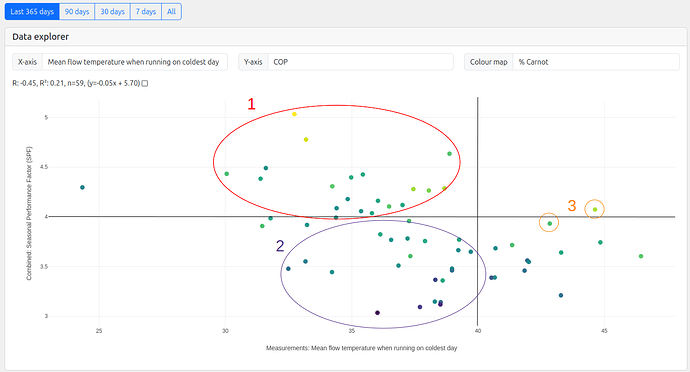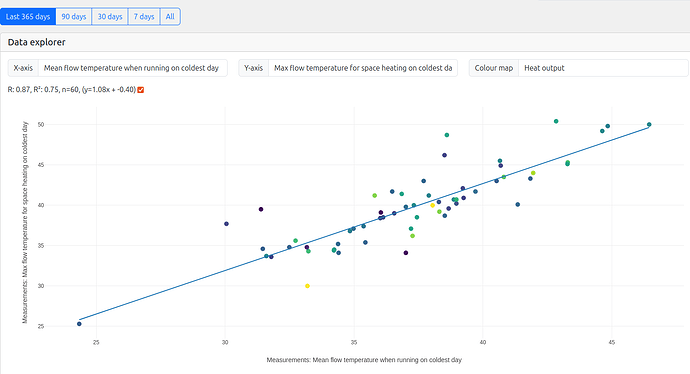Revisiting the first chart in this thread SPF vs Mean flow temperature when running on the coldest day:
-
The majority of systems that achieve a SPF of 4 or above have a mean flow temperature when the heat pump is running on the coldest day <40C and more typically ~35C.
-
A mean flow temperature when the heat pump is running on the coldest day <40C is not a guarantee of a SPF of 4 or above as we can see by the systems in area 2. There are also other factors at play.
-
There are a couple of outlier systems that do still achieve a SPF ~4 with higher than 40C average flow temperature. E.g This 10 kW Nibe S2050 https://dev.heatpumpmonitor.org/system/view?id=167 with an average flow temperature on the coldest day of 44.6C. This Nibe achieves a relatively high % carnot (within the upper bound of other high performing systems when viewed on the weighted by kWh heat delivered flow minus outside temperature chart).
I think it’s worth highlighting and taking on board that the majority of systems that do get a SPF of 4 and above on HeatpumpMonitor.org are running very low mean flow temperatures on the coldest days. 35-40C is significantly below what is more commonly designed for, 45C is usually seen as low and 50C is becoming more common. Design target temperatures are however often over-estimated given over-inflated heat loss calculations and so the in-practice flow temperatures can be lower.
There is a risk of improving the accuracy of heat loss calculations but not updating our thinking on target flow temperatures at the same time.
Max 2 hour mean flow temperature on the coldest day vs mean flow temperature when running for the whole day.
Many systems on HeatpumpMonitor run flow temperatures that are hotter for a part of the day on the coldest day, e.g higher outputs required after night time set back. While there is a wide spread of values here, the maximum 2 hour mean temperature is typically about 2.5C higher than the mean flow temperature when running for the whole day:
It’s important to bear in mind that the relationship between the design heat loss/demand & temperature and the measured values does depend to a degree on the time period that we are averaging over.

